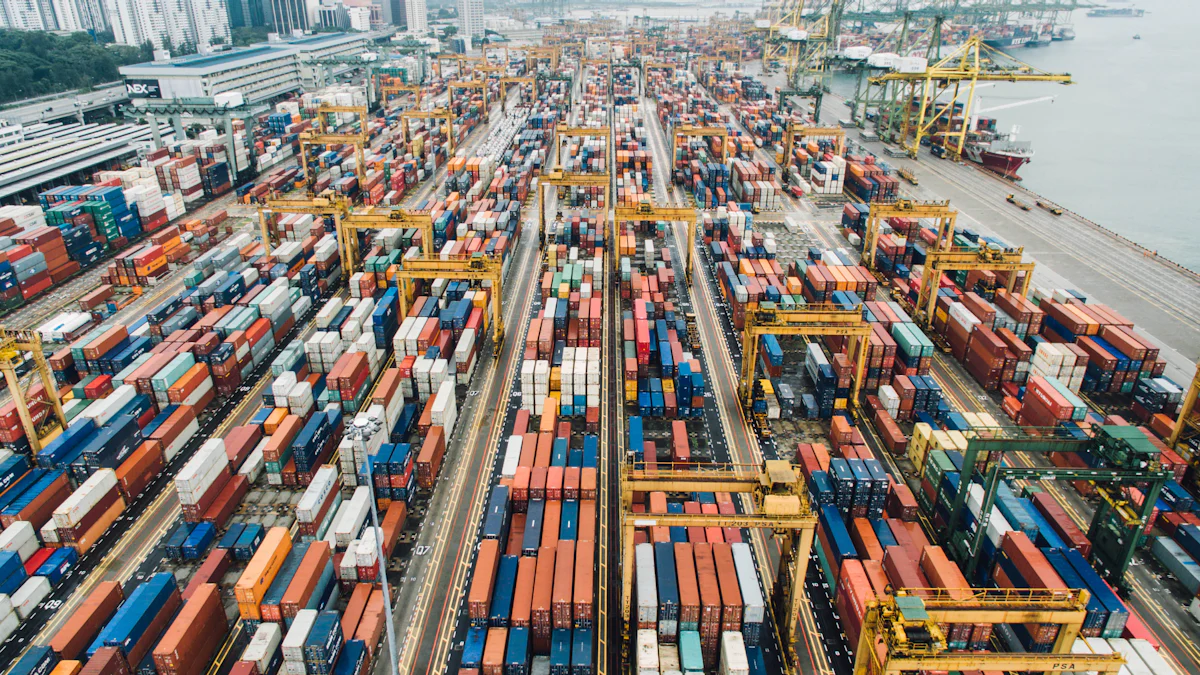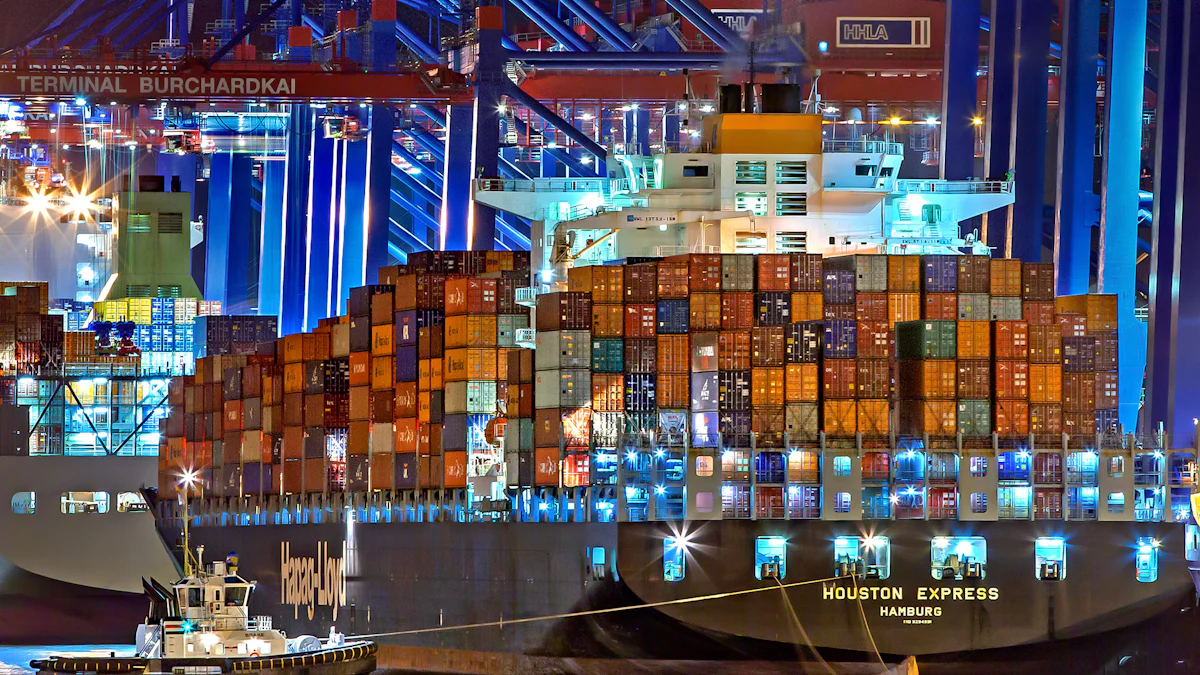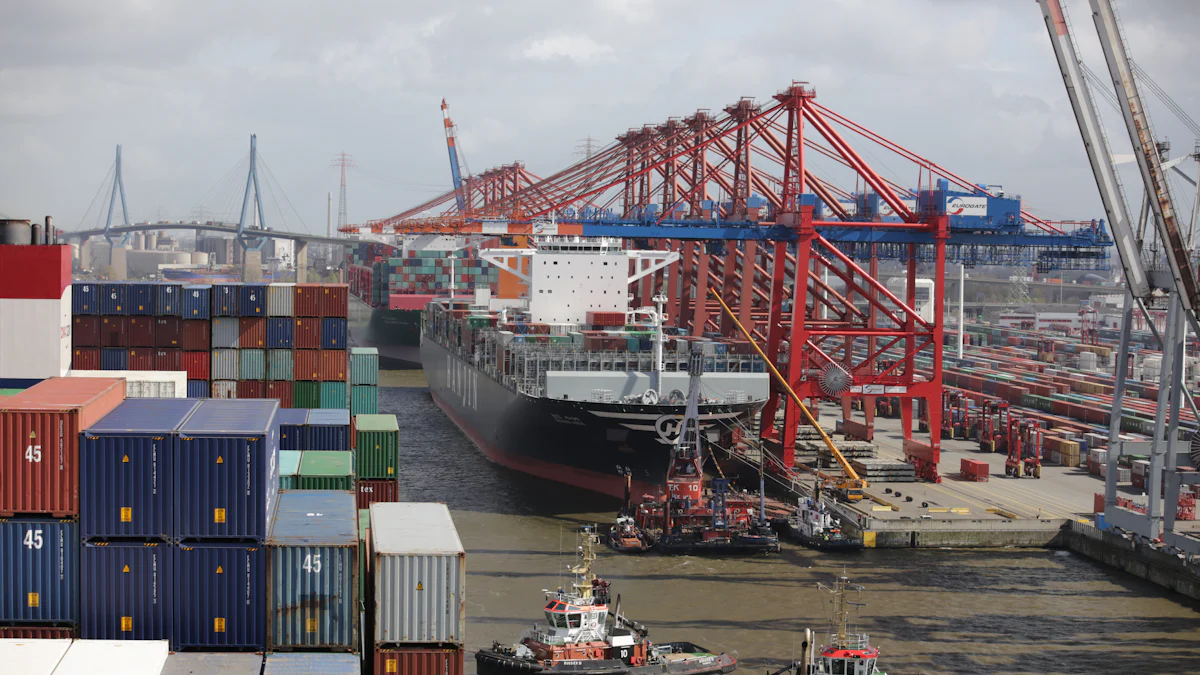Key Strategies for Effective Global Freight Solutions

In today's thriving global economy, the significance of global freight solutions cannot be overstated. As businesses expand across borders, efficient logistics play a pivotal role in ensuring seamless operations. Despite its undeniable importance, the realm of global freight is riddled with challenges that demand innovative solutions. This blog delves into key strategies that industry professionals can leverage to navigate the complexities of international shipping and enhance their operational efficiency.
Understanding the Global Freight Landscape
When considering the global freight landscape, it's essential to analyze the trends shaping this dynamic industry.
Current Trends in Global Freight
Technological Advancements
Innovations in technology are revolutionizing global freight operations. Automation and AI are streamlining processes, enhancing efficiency, and reducing errors.
Market Dynamics
The market dynamics of global freight are constantly evolving. Companies must adapt to changing demands, competition, and consumer expectations to stay ahead in this competitive landscape.
Container Freight Rate Fluctuations
Fluctuations in container freight rates significantly impact supply chain costs. Staying informed about these fluctuations is crucial for effective budgeting and decision-making.
Key Challenges in Global Freight
Regulatory Compliance
Navigating diverse regulations across regions poses a significant challenge for global freight companies. Compliance with varying laws and standards is vital to avoid penalties and disruptions.
Geopolitical Factors
Geopolitical factors can disrupt global freight operations unexpectedly. Companies need to monitor geopolitical situations closely to mitigate risks and ensure smooth transportation of goods.
Capacity and Rate Trends
Understanding capacity constraints and rate trends is paramount for efficient logistics planning. Anticipating fluctuations in capacity and rates helps companies optimize their supply chain strategies effectively.
Strategic Planning for Effective Freight Solutions
Route Optimization
Importance of Efficient Routing
Optimization models to select routes for trucks that can minimize the number of miles driven, select when and where to refuel, monitor driver operational habits, monitor hours of work, and provide real-time roadway conditions. Implementing global freight solutions requires a meticulous approach to routing that maximizes efficiency at every stage of the journey.
Tools and Technologies for Route Planning
Utilizing cutting-edge tools and technologies is imperative in modern global freight management. Advanced route planning software offers real-time insights into traffic patterns, weather conditions, and optimal routes. By harnessing these innovative solutions, companies can streamline their operations and enhance overall productivity.
Adaptive Strategies for Sea Freight
Adaptability is key in the realm of sea freight. Companies must develop flexible strategies that can swiftly respond to changing circumstances such as port congestion or adverse weather conditions. Embracing adaptive approaches ensures smooth sailing even in turbulent waters.
Cost Management
Budgeting and Forecasting
Effective cost management is a cornerstone of successful global freight solutions. By meticulously budgeting and forecasting expenses, companies can allocate resources efficiently and minimize financial risks. A proactive approach to financial planning lays the foundation for sustainable growth and profitability.
Cost-saving Techniques
Innovative cost-saving techniques are instrumental in optimizing global freight operations. From consolidating shipments to negotiating favorable rates with carriers, there are various strategies to reduce expenses without compromising service quality. Smart cost-saving measures pave the way for long-term success in the competitive logistics landscape.
Global Freight Audit and Payment Strategies
Implementing robust audit and payment strategies is essential for financial transparency in global freight endeavors. By conducting regular audits and streamlining payment processes, organizations can identify discrepancies, prevent errors, and ensure compliance with industry regulations. These strategic practices not only enhance operational efficiency but also foster trust among stakeholders.
Leveraging Technology in Freight Solutions

Automation and AI
Benefits of Automation:
Streamlining processes through automation enhances operational efficiency, reduces errors, and optimizes resource utilization.
Logistics firms investing in AI witness remarkable improvements, such as a 15% reduction in logistics costs and a 35% optimization in inventory levels.
Early adopters embracing automation technologies achieve enhanced service levels by up to 65%, showcasing the transformative power of AI in freight management.
AI Applications in Freight Management:
AI revolutionizes supply chain operations by enabling fleet operators to reduce operating costs and fuel consumption significantly.
Major companies are developing AI-powered transportation systems to gain a competitive edge, enhancing efficiency and profitability within the logistics sector.
The integration of AI in logistics facilitates unprecedented efficiency gains by combining human expertise with advanced language models.
Robotics-based Picking:
Implementing robotics-based picking solutions enhances near touchless operations for handling inventory and packages efficiently.
Embracing automation technologies like robotics-based picking optimizes freight handling processes, leading to improved operational productivity.
Automation trends emerging from robotics-based picking are revolutionizing the US trucking industry, emphasizing the importance of technological advancements.
Real-time Tracking and Monitoring
Importance of Visibility:
Real-time tracking offers unparalleled visibility into freight movements, enabling proactive decision-making and efficient supply chain management.
Enhancing visibility through real-time monitoring allows companies to respond swiftly to disruptions, ensuring seamless transportation operations globally.
Increased visibility across supply chains minimizes risks, enhances customer satisfaction, and fosters trust among stakeholders involved in global freight solutions.
Technologies for Real-time Tracking:
Utilizing cutting-edge tracking technologies provides real-time insights into shipment status, location accuracy, and delivery timelines.
GPS-enabled tracking systems offer precise location data, empowering companies to optimize routes, minimize delays, and enhance overall operational performance.
Integrating IoT devices for real-time tracking enables continuous monitoring of cargo conditions, ensuring compliance with quality standards throughout the shipping process.
Increasing Emissions Visibility:
"AI-powered SmartHaul TMS utilizes artificial intelligence to enhance efficiency,
save time, and boost profitability for carriers in the automotive logistics sector."
By leveraging AI technologies for emissions visibility monitoring, companies can reduce their carbon footprint while complying with environmental regulations effectively.
Building Strong Partnerships

Collaborating with Reliable Carriers
Select carriers based on stringent criteria to ensure operational excellence.
Build enduring relationships with carriers to foster mutual growth and reliability.
Leverage high-value port assets for optimized logistics operations.
Working with Freight Forwarders
Understand the pivotal role of freight forwarders in streamlining global logistics.
Reap the benefits of utilizing freight forwarders for efficient supply chain management.
Enhance end-to-end logistics operations through strategic partnerships.
Case Studies:
Dohrn Transfer Company Case Study
Lowered costs, increased freight visibility, and sustainability improvements.
Increased efficiency and cost savings through the use of Carrier Logistics.
Successful collaboration with a logistics provider resulted in substantial cost reduction and operational enhancements.
Risk Mitigation Strategies
Diversifying Suppliers and Manufacturing Locations
Reducing Vulnerabilities
To fortify supply chains against unforeseen disruptions, companies must diversify their supplier base and manufacturing locations. By reducing dependence on a single source for critical components or materials, organizations can enhance resilience and mitigate risks associated with supply chain vulnerabilities.
Embrace onshoring and nearshoring strategies to bring manufacturing closer to end consumers.
Reduce lead times, lower shipping costs, and enhance flexibility by producing goods nearer to their final destination.
Swiftly respond to market demands and navigate challenges linked to long-distance shipping through strategic sourcing diversification.
Case Studies of Successful Diversification
"Diversifying suppliers allowed Company X to maintain operations during a global crisis,
showcasing the value of resilience in supply chain management."
Exploring multiple sourcing options enabled Company X to secure alternative suppliers swiftly when faced with disruptions. This proactive approach not only safeguarded operations but also underscored the importance of supplier diversification in mitigating risks effectively.
Adaptive Strategies Amid Disruptions
Route and Fleet Adjustments
In times of upheaval, businesses must implement adaptive strategies such as route and fleet adjustments to ensure continuity in global freight operations. By optimizing transportation routes and fleet configurations based on real-time data insights, companies can navigate disruptions seamlessly while maintaining operational efficiency.
Monitor changing conditions closely to make timely adjustments that optimize delivery schedules.
Enhance agility by leveraging data-driven insights for route planning and fleet management.
Proactively address disruptions through adaptive strategies that prioritize operational continuity.
Real-world Examples of Adaptive Strategies
"Company Y's swift adoption of adaptive strategies during a port strike exemplifies
the significance of flexibility in global freight management."
When faced with a port strike, Company Y swiftly adjusted its routes and fleet allocations to circumvent delays effectively. This agile response not only minimized disruptions but also highlighted the transformative impact of adaptive strategies in ensuring uninterrupted global freight services.
As we gaze into the future of freight solutions, it becomes evident that technology integration, sustainability efforts, e-commerce growth, and collaboration are pivotal trends shaping the industry. In today's rapidly evolving world of logistics and supply chain management, significant challenges arise due to heightened customer expectations, escalating costs, and technological advancements. Staying ahead of the curve is imperative for companies striving to maintain competitiveness amidst these dynamic landscapes.
Keith J. Bucklew underscores the critical role of freight planning in economic success and community development. Emphasizing strategic planning and technology integration will be paramount in shaping the future landscape of global freight solutions.
The transportation and logistics sector must brace itself for strategic challenges and opportunities brought about by technological innovations. Embracing these advancements not only boosts freight efficiency but also reshapes industry dynamics, offering a competitive edge to forward-thinking organizations.
See Also
Revealing Top Global Logistics Companies: The Ultimate Guide
Overcoming Globalized World Challenges in Supply Chain Expansion
Top Methods for Supply Chain Optimization: Success Guaranteed
Revealing 5 Cutting-Edge Supply Chain Optimization Techniques
Unleashing Savings in Logistics: Insider Tips for Efficient Supply Chain
